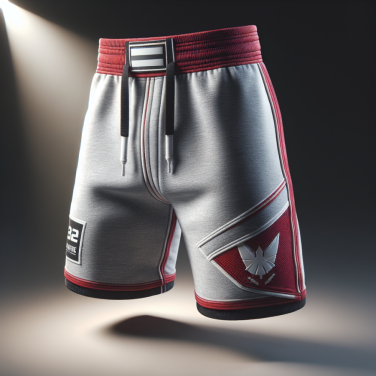Strategies and Techniques for Dominant Submission through MMA Chokeholds
In the competitive world of mixed martial arts (MMA), the ability to execute a submission can often make the difference between victory and defeat. Chokeholds, a subset of these submissions, are particularly effective techniques for dominant control over an opponent. To master the art of submission through chokeholds, one must combine a profound understanding of human anatomy with precision and strategy.
To begin, one must invest time in developing a robust foundational skill set, which includes drilling the basic chokes such as the Rear Naked Choke, Guillotine Choke, and Triangle Choke. Each chokehold capitalizes on leverage and positioning, aiming to restrict the opponent's blood flow to the brain or air flow to the lungs, forcing them to submit.
A crucial strategy when aiming for a successful chokehold is to establish positional control before attempting the submission. Achieving a dominant position, such as full mount or back control, puts you in an advantageous spot to apply a choke without significant resistance. Seamless transition into these positions during ground fighting is often the key to locking in a chokehold effectively.
Breath control and timing are techniques often overlooked by novices but are vital for experts. Proper breathing helps maintain endurance and remain calm under pressure, which is crucial when looking for an opening to apply a choke. Timing, on the other hand, is about recognizing the precise moment when an opponent is vulnerable. This could be when they are attempting a transition, when they are fatigued, or when they have made a mistake in their defense.
To refine chokehold submission techniques, incorporating resistance training is imperative. Utilizing a grappling dummy or a resisting training partner allows for the repetition of choke execution, which is essential in engraining the muscle memory required to perform these maneuvers instinctively during a bout.
A mindset focused on adaptation and improvisation is also indispensable. No two fights are the same, and opponents will often react unpredictably. Being able to adjust your strategy on the fly and modify your chokeholds to accommodate different defensive responses is a hallmark of a seasoned MMA fighter.
Consistent pressure should be applied when a choke is in place. It is important to avoid unnecessary adjustments that could create gaps for the opponent to escape. The pressure should be applied in a controlled yet forceful manner, making it clear to the opponent that the hold is inescapable.
Effective hand positioning and grip are the final pieces to the puzzle.
Read also:
Discover Your Strength: Join Local Adult MMA Training Classes!
Unlocking the Secrets of Successful Chokeholds in MMA
Chokeholds are one of the most dynamic and decisive techniques in the repertoire of a Mixed Martial Arts (MMA) fighter. They require a combination of skill, timing, and strategic execution to be performed successfully. In the world of combat sports, the ability to apply an effective chokehold can mean the difference between victory and defeat. By understanding the mechanics and variations of chokeholds, fighters can elevate their ground game and increase their chances of securing a submission win.
First and foremost, mastering the art of submission through chokeholds begins with understanding human anatomy, specifically the neck and its structures. There are primarily two types of chokeholds in MMA: blood chokes and air chokes. Blood chokes, such as the rear-naked choke or the guillotine, aim to restrict blood flow to the brain by compressing the carotid arteries. This has the effect of reducing cerebral perfusion and potentially causing the opponent to lose consciousness. On the other hand, air chokes, such as the arm-triangle choke, target the trachea and restrict airflow, making it difficult for the opponent to breathe.
One key to success in executing chokeholds is the positioning of both the fighter and the opponent. Superior positioning ensures better leverage and a tighter grip, making it more challenging for the opponent to escape. For instance, achieving full mount or back mount can be incredibly advantageous when attempting a chokehold, as it minimizes the opponent's avenues of escape and allows for full application of force.
Another crucial element is gripping technique. The efficiency of a chokehold is heavily dependent on how a fighter places their hands and arms around the opponent's neck. Each chokehold has its own unique grip; for example, the guillotine choke typically involves wrapping one arm around the opponent’s neck with a closed guard, while the hand of the choking arm grips the wrist of the other arm to reinforce the choke. It's vital for fighters to practice these grips rigorously to ensure they can secure them under the high-pressure conditions of a fight.
Breath control and timing also play a vital role in the successful execution of chokeholds. A fighter must know when to tighten the choke and when to adjust their grip or body position. Timing is often dictated by the opponent's movements; for example, anticipating when an opponent will attempt to take a deep breath can provide the perfect moment to tighten a chokehold for maximum effect.
Mastering the art of submission in Mixed Martial Arts (MMA) is an essential skill for any fighter looking to gain a competitive edge. In the realm of ground combat, chokeholds are some of the most effective techniques for overpowering an opponent. Understanding the nuances of various chokes and the mechanics behind them can be the difference between victory and defeat.
The Rear Naked Choke (RNC), hailed as one of the most powerful and iconic submission moves in MMA, is a quintessential technique. With origins in Japanese jiu-jitsu, this move involves wrapping an arm around the opponent's neck, with the crook of the elbow at the throat, and clasping your other hand behind their head. By squeezing your elbows together and expanding your chest, you cut off blood flow to the brain through the carotid arteries, often leading to a quick tap out. To effectively execute the RNC, it is crucial to secure a dominant back position, maintain tight body control, and synchronize your arm movement and chest expansion to maximize the choke's constriction.
The Guillotine Choke is another formidable submission that capitalizes on an opponent's mistake. It’s typically used when an opponent shoots for a takedown with their head exposed. To perform it, you slip your arm underneath the opponent's chin and around their neck. Then, while securing the grip with your other hand, you flex your biceps and use your torso to add pressure. What makes the guillotine so fearsome is the speed at which it can be applied, catching opponents off-guard. Practitioners should focus on grip variations, hip positioning, and the angle of the pull to ensure the choke's effectiveness.
Transitioning to a positional advantage also allows for the Triangle Choke, a potent submission that utilizes the legs. This technique can be executed from the bottom position, specifically from the guard. By entangling an opponent's arm and neck between your legs, you form a triangular shape which constricts blood flow once you pull down on their head and squeeze your knees together. The triangle choke requires flexibility and quick thinking to trap the opponent. Fighters should concentrate on securing the correct angle and locking the choke in place, ensuring the opponent's posture is broken down to prevent escape.
Then there's the Arm Triangle Choke, a versatile submission that can be performed from various positions, including the mount or side control.




